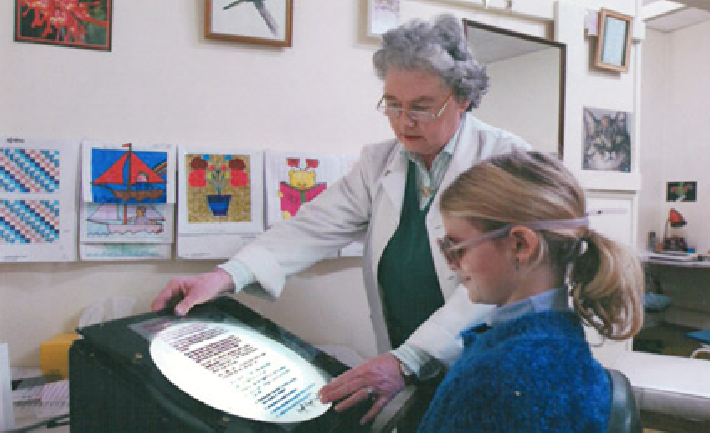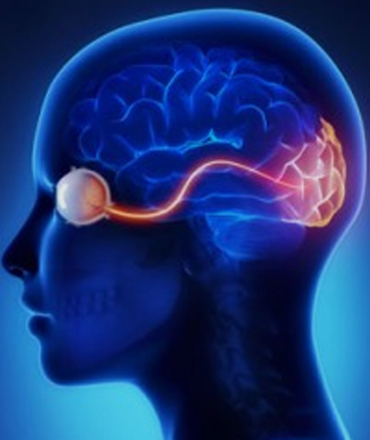We are pleased to bring to the UK the Alison Lawson treatment, a simple, safe, effective, and non-invasive treatment for visual dyslexia and learning difficulties. Invented by Alison Lawson (a university-trained orthoptist with over 60 years of experience in Australia & England), the treatment program is renowned for its use.
The Alison Lawson visual therapy program was developed by Alison Lawson, a university-trained Orthoptist with over 60 years of experience. She has devoted her life to researching and finding a solution to treat visual dyslexia. Due to her work, we provide a simple, safe, and successful treatment for learning difficulties.
Alison started her career at The Royal Children’s Hospital, Camperdown where she became head of the Orthoptic Clinic. She was invited to become a member of the Orthoptic Clinic at Royal Prince Alfred Hospital, Sydney, and later, at the Royal North Shore Medical Centre in St Leonards.
After a time, Alison went to England and was invited to join the Queen Elizabeth Hospital for Children, London. After this, she alternated between the Royal County Hospital in Surrey and St Lukes Hospital, Guildford. She was also in private practice with several leading ophthalmologists in England. In 1964, she returned to Australia and furthered her learning, undertaking various courses including that of Tutor Orthoptist, which qualified her to teach and train orthoptists.

Following this, Alison accepted the position of Head Orthoptist with a group of eye surgeons in Parramatta. Combined with a practice in Gosford, she specialized in children’s learning difficulties and undertook extensive research in the visual cortex section of the brain.
In 1979 she patented a machine known as the Lawson Anti-Suppression Device (LASD) which was used to treat Amblyopia. Following this event, Alison was increasingly aware of the number of children who were experiencing difficulty reading. The children she studied struggled with reversals of letters and words, and/or words moving on the page.
As she started to observe them more closely, she found another significant commonality: a moving focal point in one of their eyes. This moving focal point led to the brain responding in such a way as to cause the various symptoms which made learning, reading and writing difficult. This led her to develop the very simple, safe and effective medical treatment for Visual Dyslexia which was patented on 11th July, 1996.

Alison’s youngest daughter, Maria Thomas, is passionate about continuing her mother’s work. After completing a Business Degree and working in private enterprise, she was fully trained, became a qualified tutor and established a Centre on the Central Coast in Australia in 2006, relocating in 2010 to the Head Office in Moss Vale to work with her mother.
It is with great sadness that we inform you that Alison Lawson passed away on 10th April 2017. Mrs Lawson devoted her life’s work to helping suffers of dyslexia, but it was always her fervent wish that the technology she invented will continue. In her lifetime many Centres have been established in Australia. The staff operating these Centres are dedicated professionals who have been trained by Alison and more recently by Maria and have first-hand experience with the difficulties and frustration that dyslexia can cause individuals and families.
So that her work can continue and to make the treatment more accessible, other Centres have been established abroad, first in New Zealand, then in Germany, and more recently in the UK.
The word dyslexia comes from the Greek language, and its literal translation is ‘dys’ – difficult, ‘lexis_ – words; hence difficulty with words.
It is evident therefore that any child or student experiencing such difficulty will have a difficult time in an environment such as school which is book based. School and society value those who acquire a good standard in literary and literacy skills – precisely those skills which dyslexic people find so difficult to master.
Dyslexia is a ‘hidden handicap’ and can be very frustrating. Although it is not related to intelligence, the person may be misdiagnosed and frequently regarded as lazy, forgetful and inattentive, even slow and stupid. Consequently many have very low self-esteem. It is therefore very important that all teachers and parents are informed and experienced enough to identify the dyslexic child early in a school career. The teacher should provide appropriate assessment and teaching, and be able to monitor the child’s progress regularly and carefully.
The British Dyslexia Association defines dyslexia as: Organising or learning difficulties affecting language, fine co-ordination skills and working memory skills. It is independent of overall ability and conventional teaching. When untreated, there are significant limitations in the development of specific aspects of speech, reading, spelling, writing and sometimes numeracy, which may lead to secondary behavioural problems, although other areas of ability are unaffected. It is hereditary and it is estimated that at least 10% of the population have some degree of dyslexia; 4% being severely affected.


The eyes and the brain need to work together.
The successful treatment of dyslexia is heavily involved with the visual cortex, which is at the back of the brain. In pure medical terms, it is situated on the medial aspect of the occipital lobe in relation to the calcarine fissure. It is characterised by the distinguishing white line or stria of Gennari, which is visible to the naked eye.
The cellular structure of the visual cortex is of the highly granular type associated elsewhere in the cortex with sensory function. The outer and inner granular layers are made up of small granular cells densely packed. A simple analogy of the visual cortex likens it to that of a ‘layer cake’ with 7 layers, the eye simply being the camera. Utilising the LASD, the larger discs stimulate the upper layers of the visual cortex and the finest bands stimulate the deepest layer of the visual cortex.
The eye is like the camera and the visual cortex in the occipital (lower back part of the brain) area is the main receiving station of the visual impulses, whilst the frontal lobe (upper area) of the brain interprets what is being seen. A check is made on the aiming point of each eye. There should be steady binocular fixation. However, many times the fixation of one macula is very unsteady, or there can be an eccentric fixation. Demonstrating the main cause for the learning problem, the patient is able to obtain a clear focus at any level of gaze, but it cannot be maintained. As fixation fails, so does the patient’s concentration. As there is unsteady or incorrect fixation, the frontal lobe of the brain lays down deep central suppression in the visual cortex (occipital cortex) of the affected eye.
Treatment consists of an average of ten (10) one hour sessions utilising the Lawson Anti-Suppression Device (LASD). The LASD machine was first used in 1988 for the treatment of Visual Dyslexia. Activating the entire population of visual neurones in the visual cortex, the LASD utilises a range of 7 different spatial frequency gratings. These revolve through 360 degrees at a speed of one rev. per minute to directly treat the area of the problem in the visual cortex.
The eccentric or unsteady central macular fixation in the eye is treated by applying a pleoptic red filter in front of the effected eye (the macula is particularly sensitive to red), while the eye with the central macular fixation is patched. The patient views green/blue/black literacy targets through the pleoptic red filter and works with puzzles, words, math, sequencing, letters, numbers and games. These are designed to suit the age and ability of the patient.
When both eyes are holding focus, the normal binocular reflexes may then be trained. Work is then continued on the machine with the full range of coloured targets. This stimulates the full body of the cone receptor cells, progressing through all the discs to the finest, while the puzzles and literacy tasks encourage higher intellectual stimulation of the frontal lobe. There is specific homework in between sessions that supports the treatment. It is important to have full co-operation with patient (and with parents if applicable), and that the set protocol is followed for maximum outcome to be achieved. Finally the patient then has a higher standard of focusing than the average person, with full binocular single vision at every level of gaze. Wide amplitude of dissociation between convergence and accommodation is achieved. Therefore, full control from the frontal lobe of the brain is achieved, so that this treatment will last throughout life. No further eye exercises are required.

• Reading difficulties
• Work unfinished
• Spells badly
• Poor comprehension
• Forgetful
• Can read but does not read for pleasure
• Difficulty reading aloud
• Words moving/print distortions
• Easily distracted
• Behaviour problems
• Poor sporting ability
• Lacks confidence
• Low self esteem
• Headaches and tiredness
• Reverses Letters
• Labelled Dyslexic or ADD
If you or your child displays symptoms listed please CONTACT US to arrange an assessment. We can accurately diagnose in one hour and then discuss treatment if required.


Keen to learn more?
The first step is to book a visual assessment at the Centre. We will look at the functioning of the eyes and will determine if this unique treatment is recommended. Good vision involves many different vision skills. Issues such as poor tracking, weak visual muscular control and unsteady fixation can go undetected at routine eye checks. For people with symptoms of dyslexia and learning difficulties, the eyes are not working together properly and the fixation of the aiming point in one eye is often unsteady. A check is made on the aiming point of each eye and several tests are done to confirm binocular vision and see how effectively the brain is using the eyes.
From there, we will provide our recommendations to you regarding treatment.
The treatment program is made up of ten (10) one hour treatments, utilising the Lawson Anti-Suppression Device (LASD). This is combined with structured home exercises that are completed between treatments, so full cooperation with the patient (and parents if applicable) is required.
© Copyright 2025. Alison Lawson Centre London. All rights reserved.